ACS Publications regularly produces collections of the most important chemistry research topics. These Virtual Collections of the most important chemistry research topics bring together the most important ideas in the field in a variety of ways, including Special Issues and ACS Selects from across the portfolio journals. These collections reflect the most important chemistry research […]

ACS Publications regularly produces collections of the most important chemistry research topics. These Virtual Collections of the most important chemistry research topics bring together the most important ideas in the field in a variety of ways, including Special Issues and ACS Selects from across the portfolio journals. These collections reflect the most important chemistry research topics of current scientific interest and are designed for experienced investigators and educators alike.
Browse 33 of the most important, engaging topics in chemists with Virtual Collections released by ACS Publications journals in Q4 2019 and Q1 2020:
***
March
Resources for Teaching Your Chemistry Class Online: A Free to Read Collection from the American Chemical Society & the ACS Division of Chemical Education
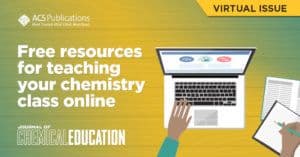
In support of the dedicated educators who are meeting the challenge of keeping their students’ chemistry education going, while schools are closed to slow the spread of the novel coronavirus (2019–nCoV), ACS Publications and the ACS Division of Chemical Education are sharing this collection of resources, including free to read articles from the Journal of Chemical Education.
***
Women at the Forefront of Chemistry
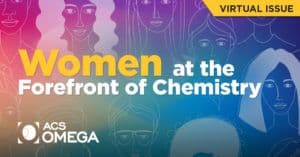
In this special collection, the first Virtual Issue for ACS Omega, we celebrate the contribution of women researchers who have published new advances from their groups in our journal. The year 2020 is special since it marks the 25th anniversary of The Beijing Platform for Action, the most advanced blueprint for achieving gender equality in the world. It also marks ten years since the establishment of UN Women, and the 20th anniversary of the UN Security Council resolution 1325 on women, peace, and security.
***
Overview of Research on the Fate and Behavior of Enveloped Viruses in the Environment
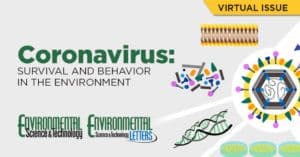
A large majority of studies on the environmental sources, fate, and transport of viruses have focused on non-enveloped viruses such as norovirus and enteroviruses. More recent high profile, global outbreaks of viral diseases have been caused by enveloped viruses including viruses from the Coronavirus family (SARS, MERS, COVID-19). Enveloped viruses feature a lipid membrane surrounding their protein capsid and genome. Lack of knowledge on the presence of infective enveloped viruses in human waste, the environmental fate and transport of enveloped viruses, best practices to disinfect surfaces and water, wash contaminated body parts, and treat wastewater and feces to removal enveloped viruses, has hampered outbreak response. Research into the environmental persistence and routes of transmission of SARS, MERS, and COVID-19 is further complicated by safety concerns of working with high-risk viruses. Limited direct research is therefore available on the environmental persistence of viruses in the Coronavirus family. The majority of research has been conducted on enveloped ‘surrogate’ viruses.
***
Computational Toxicology
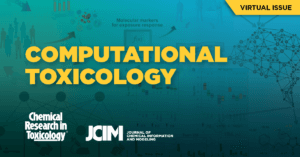
Computational models have earned broad acceptance for assessing chemical toxicity during early stages of drug discovery or environmental safety assessment. Consequently some academic groups and many companies have developed such platforms for chemical toxicity prediction. This joint virtual issue from Journal of Chemical Information and Modeling and Chemical Research in Toxicology highlights recent developments in the area of computational toxicology; an important component of modern drug discovery and chemical safety assessment research. Both journals continue to be committed to publishing innovative and impactful papers in this research discipline.
***
JOC 2019 Featured Articles: Unique, Inspiring, and Exceptionally Well-Done Chemistry
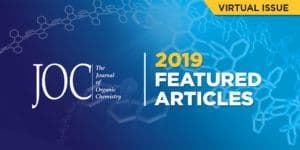
Like in sports, from the professional level on down to the local youth level, the top-performing athletes for a season garner accolades by winning awards and being named to all-star teams. In other venues, such as music, television, and film, we have Grammys, Emmys, and Oscars. In science, we have the Nobel Prize and election to National Academies. Those are just a few ways we recognize achievement. The Journal of Organic Chemistry has its annual list of all-star award-winners as well: Featured Articles.
***
Chronic Traumatic Encephalopathy
Chronic Traumatic Encephalopathy (CTE), a degenerative brain disease, is the result of a slow spreading of Tau proteins throughout the brain in a pattern that is unique to CTE, as a result of repetitive hits to the head. As a result, CTE patients experience progressive memory issues, severe mood changes and erratic, often suicidal and/or violent, behavior. The prevalence of this condition is becoming increasingly well understood, and has been observed in a broad range of individuals including athletes in high-contact sports, military veterans, even victims of repeated domestic abuse. A key issue is that the disease can only currently be definitively diagnosed post-mortem by brain tissue analysis. As a result, ACS Chemical Neuroscience has actively solicited and published a number of articles seeking novel approaches for diagnostic assays and imaging techniques, therapeutic strategies, and new insights into fundamentals aspects of Tau aggregation as it relates to CTE. With this Virtual Issue, we highlight key papers on the topic, and encourage you to continue submitting your significant advances on all aspects of Tau, CTE, and other prion diseases to ACS Chemical Neuroscience.
***
Carbon Capture & Conversion
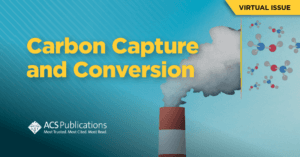
Climate change is a global concern, with the potential to severely impact the lives of people all around the world. Researchers from across the ACS community are working to mitigate these changes by developing technologies to capture CO2 to keep it out of the atmosphere, and then convert CO2 to useful chemical stocks. This virtual issue brings together articles from Accounts of Chemical Research, ACS Applied Materials and Interfaces, ACS Catalysis, Chemical Reviews, and Journal of the American Chemical Society on the topic of Carbon Capture and Conversion.
***
Super-Resolution Far-Field Optical Microscopy
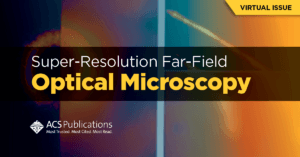
This Virtual Issue highlights recent articles in The Journal of Physical Chemistry A/B/C, The Journal of Physical Chemistry Letters, ACS Nano, Analytical Chemistry, ACS Photonics, and Nano Letters that describe super‐resolution measurements using far‐field optical microscopes. Optical microscopy is a widely used tool for examining the structure of materials and investigating dynamics. In traditional optical microscopes, the spatial resolution is limited by diffraction to roughly the wavelength of light divided by 2 (several hundred nanometers in most cases). This limit can be overcome in different ways, with the first demonstrations utilizing near‐field optical effects. More recently, there has been a large amount of effort in adapting regular far‐field optical microscopes for super‐resolution imaging. Varieties of different approaches have been developed, and the importance of this field was recognized with the 2014 Nobel Prize to Betzig, Hell and Moerner. The focus of this Virtual Issue is on far-field measurements because these techniques are less complex, easier to implement and have a wider field‐of‐view than that of near‐field scanning optical microscopy measurements.
***
February
Remembering Dr. Richard P. Van Duyne

To celebrate and honor the life and work of Prof. Richard Van Duyne, ACS Publications have compiled a partial list of his publications. Van Duyne was an extraordinary chemist best known for his pioneering roles in nanoscale plasmonics and surface‐enhanced Raman scattering (SERS) but also well‐known for his mentorship and advocacy for chemists from traditionally underrepresented groups. Van Duyne passed away in July 2019, leaving a multitude of mentees, collaborators, and friends whose careers and science are better for having interacted with him. There are many exciting publications that could not fit within this virtual issue, so please consider this invitation to explore all of Van Duyne’s scientific contributions more deeply.
***
F. Javier Aoiz Festschrift
F. Javier Aoiz started his career as an experimentalist. This experience provided him with a profound understanding of experimental research in molecular reaction dynamics, and that understanding pervades many of his publications. This ranges from providing detailed modeling of experimental methods, simulations of experimental results, or developments of data analysis. The motivation of this work is clear: the correct interpretation of an experiment is only possible if the experiment is fully characterized, and it is precisely understood what the experiment can measure. Many of Javier’s publications reveal detailed simulation work, in which experiments and theory are compared as closely as possible on the same footing.
***
Celebrating Women in Organic Chemistry

Organic Chemistry is arguably the richest and most diverse field of science, covering an impressive array of topics with foundations in biology, chemistry, physics, and materials science that give rise to applications that touch on every aspect of our daily lives. But as with all areas of science and engineering, the diversity of the people who contribute to this science remains a work in progress.
***
Chemistry in Coronavirus Research: A Free to Read Collection from the American Chemical Society
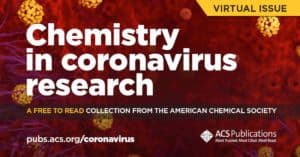
In light of the current outbreak of a novel coronavirus (2019–nCoV), ACS Publications would like to share this Virtual Issue that features a collection of articles on coronavirus research. Chemistry has a key role to play in understanding everything from viral structure to pathogenesis, isolation of vaccines and therapies, as well as in the development of materials and techniques used by basic researchers, virologists and clinicians. This Virtual Issue aims to provide a brief overview of the important contributions of chemistry to understanding and controlling the spread of coronaviruses and includes articles from ACS Infectious Diseases, ACS Chemical Biology, Journal of Medicinal Chemistry, Biochemistry, Chemical Reviews, and ACS Applied Materials & Interfaces as well as the preprint server ChemRxiv. We hope the research contained in this Virtual Issue will provide you with important insight into challenges and approaches in virus research.
***
January
From Russia, With Chemistry

When speaking of Russian chemistry, the first thoughts for many people will be of Mendeleev, best known for his rendering of the Periodic Table. Mendeleev is but one Russian chemist, though; Russia has a rich tradition in the chemical sciences, although international political-ideological differences and language barriers over time have limited open communication of this science around the world. In recent years, however, these challenges have been evaporating and leading to an unprecedented global reach for chemistry.
***
Women Scientists at the Forefront of Energy Research
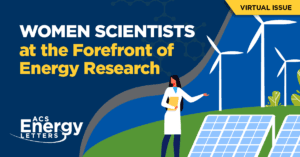
We celebrate the contribution of female energy researchers who have published new advances from their laboratories in ACS Energy Letters. In order to inspire other scientists working in the field, we asked them to comment on their inspiration to engage in energy research, discuss an “aha” moment in research, and/or provide advice to newcomers in the field. These personal stories, collected from early career researchers to well-established senior scientists, span the successful career paths they have taken to become leaders in the community. It is our hope that these personal reflections can motivate many young researchers to tackle challenges in clean energy. In this two-part series, we compile papers published by women.
***
December
Metal Complexes for Catalytic Polymerizations
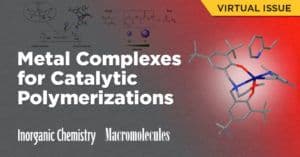
The production of polymers worldwide exceeds 350 million tons/year, and polymerization catalysis is crucial in this gargantuan effort, not just for mediating reaction rates and product selectivity to deliver cost-effect manufacturing but also for controlling polymer properties such as molecular weight, crystallinity, rheology, and mechanical performance. As such, innovations in polymerization catalysis require understanding both inorganic chemistry and polymer macromolecular properties. To reflect on this interdisciplinary approach, Inorganic Chemistry and Macromolecules present this Virtual Issue, “Metal Complexes for Catalytic Polymerizations,” depicting a collaboration between these two leading ACS journals that publish research at the heart of this chemistry.
***
Chasing Plasmons in Flatland
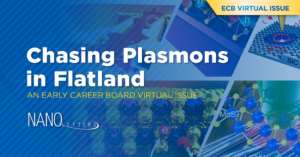
Two-dimensional layered crystals, including graphene and transition metal dichalcogenides, represent an interesting avenue for studying light-matter interactions at the nanoscale in confined geometries. They offer several attractive properties, such as large exciton binding energies, strong excitonic resonances, and tunable bandgaps from the visible to the near-IR along with large spin−orbit coupling, direct bandgap transitions, and valley-selective responses.
***
Protein Engineering for Sensors
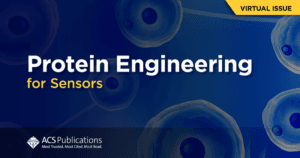
As masters of molecular recognition, proteins are key components in many molecular sensors, either as part of a sensor device or as a stand-alone sensor. The former include proteins involved in molecular recognition (antibodies, ligand-binding domains, DNA-binding proteins, enzymes) or in signal generation (reporter enzymes, fluorescent proteins, polymerases). Molecular recognition and signal generation are integrated into a single sensor protein in stand-alone sensors, rendering these sensors attractive as genetically encoded sensors for intracellular sensing and as sensor proteins for point-of-care diagnostics. Despite its importance, the role of protein engineering in sensor development remains sometimes underappreciated and many opportunities remain for protein engineering and synthetic biology to contribute to the sensor field. In this virtual issue, we have selected 27 recent articles from ACS Sensors, ACS Chemical Biology, ACS Synthetic Biology and Bioconjugate Chemistry that represent the most recent developments in the engineering of new proteins for sensing and together illustrate the importance of protein engineering to the field of sensors
***
Hai-Lung Dai Festschrift

Hai-Lung is a productive and creative experimental physical chemist, who has been a much-admired mentor for several generations of scientists, as well as a stimulating colleague and collaborator. This issue is a collection of papers from students and postdocs who have worked in Hai-Lung’s laboratory, as well as his colleagues and friends. As can be seen from the list of papers, the topics that are covered in this Virtual Special Issue are extremely broad, ranging from the high-resolution spectroscopy of small molecules, through to linear and nonlinear optical studies of biological systems, plasmonics, and surface science. This, of course, reflects Hai-Lung’s own broad interests in science. In addition to running a large and vigorous research group, Hai-Lung has also held a number of important administrative roles at the University of Pennsylvania and Temple University. In these roles, he has nurtured the careers of many scientists beyond those that have formally worked in his own group. Hai-Lung has also been a leader in advancing science and chemistry education in the city of Philadelphia, where he has spent the majority of his career and raised his family.
***
Recent Highlights on Interfaces from India
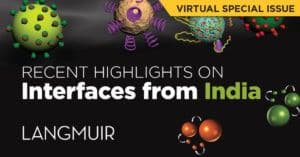
Getting to know the authors, reviewers, and readers from a broad range of institutions located around the world and at different stages in their career is one of the most exciting aspects of working with Langmuir. This global community is united in accumulating new knowledge on various facets of science where interface plays an important role. In this virtual issue, Langmuir is delighted to highlight the invaluable contributions of authors from India whose publications form a set of most widely read, and highly cited articles over the last three years.
***
Biomacromolecules for Emerging Biological and Medical Science and Technology
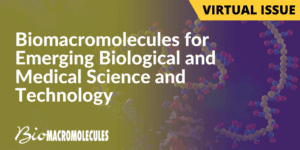
On the occasion of the 20th Anniversary of Biomacromolecules, we have also assembled a collection of 10 invited Perspectives from representative scientists in distinct research areas. The topics broadly cover development of biomacromolecules for advanced tissue engineering, bio-perspectives of shape-memory polymers, controlled synthesis and biomedical applications of biomacromolecules hybrid materials, polymeric vectors for non-viral nucleic acid delivery and gene editing, and advanced nanomedicines for cancer therapy. In the past 20 years, Biomacromolecules has become a flagship journal dedicated to serve the global biomacromolecules community and we hope the journal will continue to be a prime forum of choice for disseminating the most important findings in biomacromolecules research and development.
***
The Life and Times of Richard A. Andersen
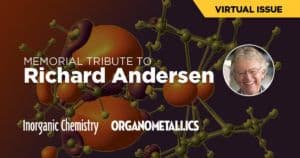
Academic researchers are usually quick to recognize the accomplishments of their colleagues, heaping praise on them when they reach a milestone birthday or, sadly, when they pass away. A few seem to always rise above the accolades to a place of higher reverence. One of those is Chemistry Professor Richard A. Andersen of the University of California, Berkeley.
***
Leo Radom Festschrift

Professor Leo Radom was born in Shanghai in 1944. His family moved to Sydney, Australia, in 1947. Following his BSc in Chemistry at the University of Sydney, he obtained his Ph.D. in experimental physical organic chemistry in 1969 with Raymond Le Fèvre. Leo then turned to theory during a postdoctoral period with John Pople at Carnegie-Mellon University in Pittsburgh. He returned to Australia in 1972 to the Research School of Chemistry at the Australian National University and then moved to the University of Sydney in 2003, where he is now an Emeritus Professor of Chemistry. Leo’s main research interests concern the study of the structures and stabilities of molecules and the mechanisms of reactions in which they are involved, by the use of highly accurate computational quantum chemistry procedures. He has published over 500 papers, which have been cited over 39 000 times in the scientific literature.
***
November
The Waterloo Institute for Nanotechnology

The Waterloo Institute for Nanotechnology (WIN) is Canada’s largest nanotechnology institute and a world leader in nanoscience and nanotechnology that addresses the United Nations’ sustainable development goals. This Virtual Issue highlights research breakthroughs in energy harvesting and storage technology areas published by members of WIN in ACS Nano in the past decade.
***
Iron Redox Chemistry and Its Environmental Impact
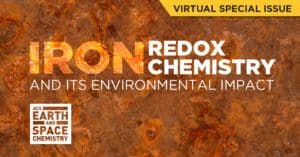
Iron (Fe) is the most abundant redox-active element at the Earth’s surface. It occurs in diverse host rock lithologies, sediments, and soils as accessory oxide and oxyhydroxide minerals and nanoparticles that can dominate the reactive mineral/water interfacial area. From the field scale down to the nanoscale, this Virtual Special Issue seeks to highlight conceptual advances in understanding the interfacial redox chemistry of Fe and closely related metal oxide surfaces (e.g., Mn), so that reaction rates and the strength of chemical associations over time can ultimately be more accurately predicted. The issue features a critical review about the dissolution of Fe in Fe-rich minerals along with 20 research articles covering a broad spectrum of new geochemical process understanding in areas of (a) formation and phase transformations, (b) sorption processes, and (c) abiotic and biotic redox mechanisms at interfaces.
***
Structure Property Relationship in Crystalline Solids
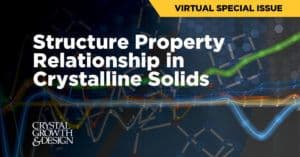
Structural correlation with the properties of crystalline solids has witnessed remarkable growth in recent years. The complexities in the structure and its relationship with the molecular properties might need to reach the next level of understanding for a more efficient design of materials. Indeed, a thorough knowledge of X-ray crystallography is mandatory to understand the solid-state structure of crystalline materials and subsequently the molecular assembly for effective design of solids with tailored properties. To develop an effective material, primarily a robust perception about the directionality and strength of noncovalent interactions (comprising hydrogen bonding, π···π interactions, and halogen bonding) appears vital. To date, researchers have dedicated significant efforts to discover materials pertaining to a plethora of applications, but a faster progression could be achieved by the synergy between the design strategy of molecules and an adequate understanding of the intermolecular forces involved therein.
***
Astrochemistry: From the Chemical Laboratory to the Stars

This Virtual Issue combines recent publications from the Journal of Physical Chemistry A and ACS Earth and Space Chemistry to highlight new advances in the field of astrochemistry. The highly interdisciplinary field of astrochemistry incorporates research ranging over laboratory spectroscopic studies of astrophysical molecules, laboratory kinetics and dynamics studies of astrochemical processes, computational studies of astrophysical molecules, modeling of astrochemical processes, and observational studies of molecule-rich astronomical environments. The papers in this collection span this range of topics, offering a glimpse into a rich and interdisciplinary field that encompasses work from a variety of research areas in chemistry.
***
San Sebastian, a City of (Nano)Science and Technology

San Sebastian has recently become a city of science and technology, with a strong focus on nanoscience research, characterized by interdisciplinary approaches and the support of intense industrial activity in the region. The San Sebastian nanoscience community has contributed considerably to ACS Nano, with more than 100 publications during the past decade. This Virtual Issue of ACS Nano features the most impactful publications from San Sebastian nanoscience community.
***
Letters from India: A Perspective on Organic Chemistry
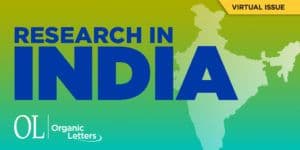
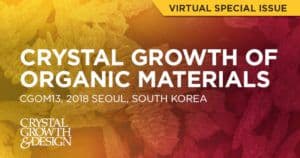
This virtual issue features some selected papers taken from the 13th International Workshop on the Crystal Growth of Organic Materials (CGOM13) which was held in Seoul (South Korea) in August 2018. CGOM13 was organized by Professors Woo-Sik Kim and Jeong Won Kang from Kyung Hee University and Korea University, respectively, and attracted 175 attendees including 78 overseas delegates from 13 countries.
***
Lithium-Ion Batteries and Beyond: Celebrating the 2019 Nobel Prize in Chemistry
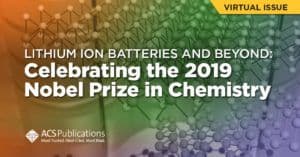
To commemorate the 2019 Nobel Prize in Chemistry awarded to John B. Goodenough, M. Stanley Whittingham, and Akira Yoshino for their pioneering contributions to Li-ion battery research, we are honoured to share a collection of reviews, perspectives, viewpoints, and research articles that Profs. Goodenough and Whittingham published in ACS journals. This virtual issue represents a small subset of their more recent articles (a challenge to narrow down when considering such prolific authors!) from the journals Accounts of Chemical Research, ACS Applied Energy Materials, ACS Applied Materials & Interfaces, ACS Catalysis, ACS Energy Letters, Chemical Reviews, Chemistry of Materials, Journal of the American Chemical Society, and The Journal of Physical Chemistry C. Through these articles, they explore the evolution of the Li-ion battery, state-of-the-art developments, opportunities and challenges in energy storage, as well as emerging areas such as the advancement of sodium-ion, inverse-aluminum, and solid-state batteries. We hope that you enjoy this collection in celebration of the pioneering achievements of Profs. Goodenough, Whittingham, and Yoshino.
***
October
Bioinspired Catalysis
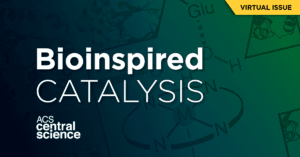
Inspired by the wealth of chemistry that enzymes are able to perform in living organisms, chemists have looked up to nature in order to design more efficient and selective catalysts to enable challenging transformations. This virtual issue outlines some of the cutting-edge discoveries in the field touching on topics such as the emergence of homochirality, the development of asymmetric C–H activation processes as well as the design and repurposing of metalloenzymes among many others.
***
Machine-Learning Discoveries in Materials Science
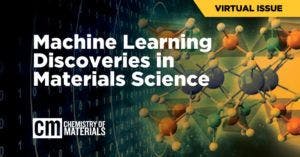
Applications of machine learning, and machine learning-based models in materials chemistry, are a rapidly growing area of research. Machine learning enables the discovery of trends in chemical data, and provides guidance for new materials via fast screening of unexplored chemical white space. The next ground-breaking discovery of a high-efficiency thermoelectric or a room-temperature superconductor may happen thanks to insights from machine learning, and it is exciting to see a growing number of submissions to Chemistry of Materials that view machine learning as a helpful tool for materials discovery. We have loosely grouped the 22 papers in this virtual issue into two categories: machine learning to enable (i) predictions of materials properties, including band gap, thermal and ion conductivity, surface properties, and luminescence, and (ii) predictions of structure and experimental optimization. Of course, many of the papers tackle both aspects, and thus these divisions are a simply a loose classification to ‘guide the eye’. We hope that this virtual issue on machine learning applied to materials chemistry will inspire your own discoveries.
***
GPCRs – G Protein-Coupled Receptors
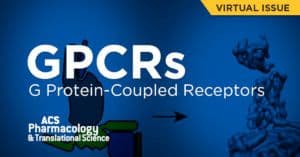
This Virtual Special Issue presents notable advances in our understanding of G Protein-Coupled Receptors (GPCRs) published in 2018 and 2019 in ACS Pharmacology & Translational Science. GPCRs are the largest class of cell surface receptor proteins and one of the major classes of drug targets. This collection, from many of the leading researchers in the field, explores the structure and function of GPCRs including the key concepts of biased signalling and allosteric modulation, the identification of new tools, and their application to advancing physiological understanding and disease intervention.
***
Three Pillars of Effective Research: Measurements, Analysis, and Dissemination

The availability of automated instruments and software has created a level playing field for performing scientific measurements for researchers around the globe. Individuals have the responsibility to ensure that all steps undertaken to build the three pillars of scientific research (collection, analysis and presentation of data) are verifiable. This Virtual Issue features articles from ACS Catalysis, ACS Energy Letters, ACS Nano, Chemistry of Materials, and the Journal of Physical Chemistry Letters that serve as valuable resources for both well-established and early career researchers as they seek to conduct and present their work with optimal accuracy and reliability.
***